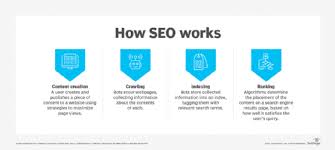The Power of Agile Technology in Software Engineering
Agile technology has revolutionized the way software engineering projects are approached and executed. By embracing the principles of agility, software development teams are able to adapt and respond to changing requirements and market demands with speed and efficiency.
One of the key benefits of agile technology is its iterative approach to development. Instead of following a rigid plan from start to finish, agile methodologies allow for continuous feedback and improvement throughout the development process. This results in software that better meets the needs of users and stakeholders.
Another advantage of agile technology is its focus on collaboration and communication. By breaking down silos between different roles within a team, agile methodologies promote a culture of transparency and shared responsibility. This leads to greater teamwork and productivity, ultimately resulting in higher-quality software products.
Furthermore, agile technology encourages flexibility and adaptability in the face of uncertainty. By prioritizing working software over comprehensive documentation and embracing change rather than resisting it, agile teams are better equipped to respond to unexpected challenges and opportunities as they arise.
In conclusion, agile technology has become a cornerstone of modern software engineering practices due to its emphasis on iterative development, collaboration, flexibility, and adaptability. By leveraging the power of agility, software development teams can deliver high-quality products that meet the evolving needs of users and stakeholders in today’s fast-paced digital landscape.
7 Essential Tips for Mastering Agile Technology in Software Engineering
- Embrace change and be flexible in responding to it.
- Prioritize collaboration and communication within the team.
- Break down tasks into smaller, manageable chunks for better efficiency.
- Regularly review and adapt processes to improve productivity.
- Encourage continuous integration and testing for early issue detection.
- ‘Fail fast, learn fast’ – embrace failures as learning opportunities.
- Ensure customer feedback is incorporated throughout the development process.
Embrace change and be flexible in responding to it.
Embracing change and being flexible in responding to it is a fundamental principle of agile technology in software engineering. By recognizing that requirements and priorities may shift throughout a project, agile teams are able to adapt quickly and effectively to meet evolving needs. This approach not only allows for greater responsiveness to market demands but also fosters a culture of continuous improvement and innovation within the team. Ultimately, by embracing change and maintaining flexibility, agile teams can deliver high-quality software products that truly address the dynamic needs of users and stakeholders.
Prioritize collaboration and communication within the team.
To optimize the effectiveness of agile technology in software engineering, it is crucial to prioritize collaboration and communication within the team. By fostering an environment where team members openly share ideas, feedback, and information, projects can benefit from diverse perspectives and collective problem-solving. Effective communication ensures that everyone is aligned on project goals, progress, and potential challenges, leading to increased productivity, improved decision-making, and ultimately the successful delivery of high-quality software products.
Break down tasks into smaller, manageable chunks for better efficiency.
Breaking down tasks into smaller, manageable chunks is a fundamental tip in agile technology for software engineering that can significantly enhance efficiency and productivity. By dividing larger tasks into smaller, more achievable components, development teams can focus on incremental progress, maintain better control over timelines, and easily adapt to changing requirements. This approach not only helps in better tracking and monitoring of project progress but also enables team members to collaborate more effectively and deliver high-quality results in a timely manner.
Regularly review and adapt processes to improve productivity.
Regularly reviewing and adapting processes is a crucial tip in agile technology for software engineering. By consistently evaluating and adjusting workflows, teams can identify inefficiencies, bottlenecks, and areas for improvement. This proactive approach not only enhances productivity but also fosters a culture of continuous learning and growth within the team. Embracing change and making iterative improvements based on feedback and data ensures that software development processes remain agile, efficient, and aligned with project goals.
Encourage continuous integration and testing for early issue detection.
Encouraging continuous integration and testing in software engineering is a crucial tip in agile technology. By integrating code changes frequently and running automated tests regularly, teams can detect issues early in the development process. This proactive approach allows for quick identification and resolution of potential problems, leading to higher-quality software products and smoother project delivery.
‘Fail fast, learn fast’ – embrace failures as learning opportunities.
In the realm of agile technology in software engineering, the principle of ‘Fail fast, learn fast’ encourages teams to view failures as valuable learning opportunities rather than setbacks. By embracing failures early on in the development process, teams can quickly identify and address issues, leading to continuous improvement and innovation. This mindset fosters a culture of resilience and adaptability, enabling software development teams to iterate rapidly and deliver higher-quality products that better align with user needs and expectations.
Ensure customer feedback is incorporated throughout the development process.
In agile technology within software engineering, it is crucial to ensure that customer feedback is incorporated consistently throughout the development process. By actively engaging with customers and stakeholders at every stage of the project, software development teams can gather valuable insights and suggestions that help shape the product to better meet user needs and expectations. This iterative approach not only fosters a deeper understanding of customer requirements but also leads to the creation of more user-centric and successful software solutions.




